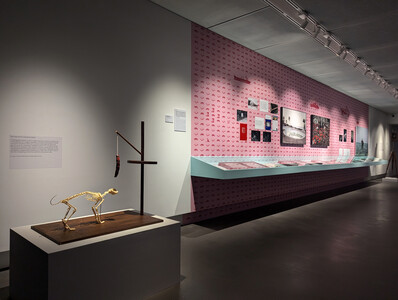Group Exhibition Kaohsiung Museum of Fine Arts, Kaohsiung
Between Waves and Soils represents the ever-changing boundary between land and water, while also metaphorically reflecting the constantly shifting borders of living spaces between humans and non-human life forms.
Who owns the land and water? How are the boundaries of “ownership”—be they defined by communities, nations, economic zones, or colonies—established and demarcated? These inquires fuel the inspiration behind this exhibition. Long before humans appeared, the planet we rely on for survival had already been undergoing continuous geographical changes. However, as human civilization developed on a massive scale, territorial conflicts, national disputes, and land and water exploitation have caused impacts far more pronounced and disruptive than those of other life forms cohabiting this planet. Particularly since the Industrial Revolution, the commodification and capitalization of nature have turned it into quantifiable and measurable resources, exploited by the powerful while squeezing the needs of the marginalized and other species.
With global resource tensions intensifying, the contradictions and conflicts in resource distribution have become ever more urgent. Boundaries, in this context, become one of the key markers by which humans recognize and utilize resources. Yet the supposedly fixed borders are actually visual constructs created by humans for control and planning. Addressing and confronting these shifting borders is central to the themes of Between Waves and Soils.
This exhibition aims to explore the interconnected relationship between humans and their environments through three perspectives: “Symbiosis and Healing,” “Measurement, Observation, and Documentation,” and “Multiple Narratives.” Featuring works by ten groups of artists from Taiwan, Macau, Singapore, and Italy, it begins from a compassionate approach that embraces healing and coexistence, to scientific views that empathize with the non-human, we delve into the borders where different communities, environments, and resources meet, inviting viewers to reconsider their place within it.
More Pictures:





















